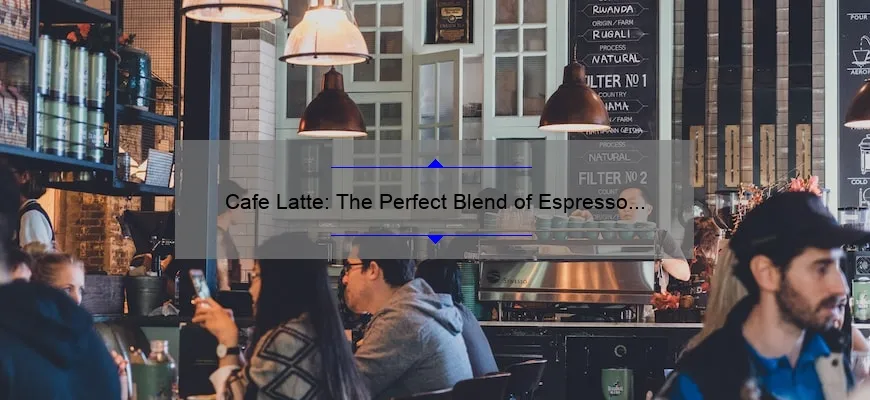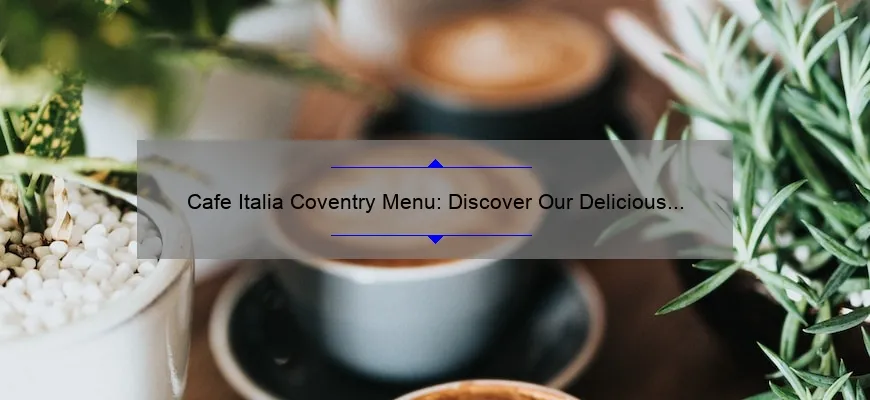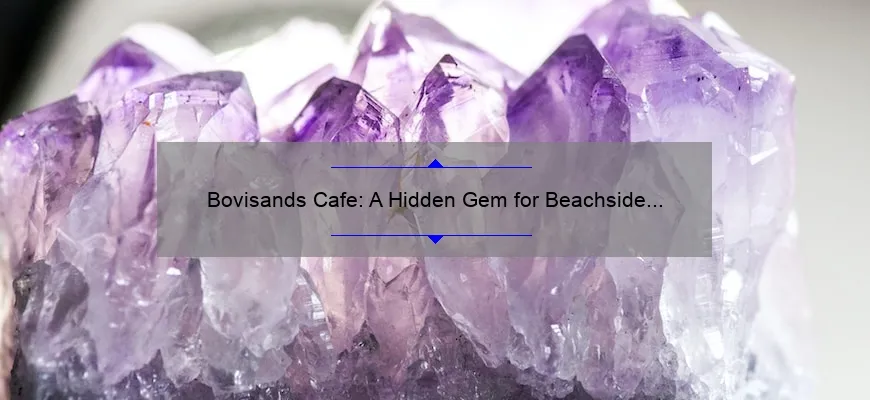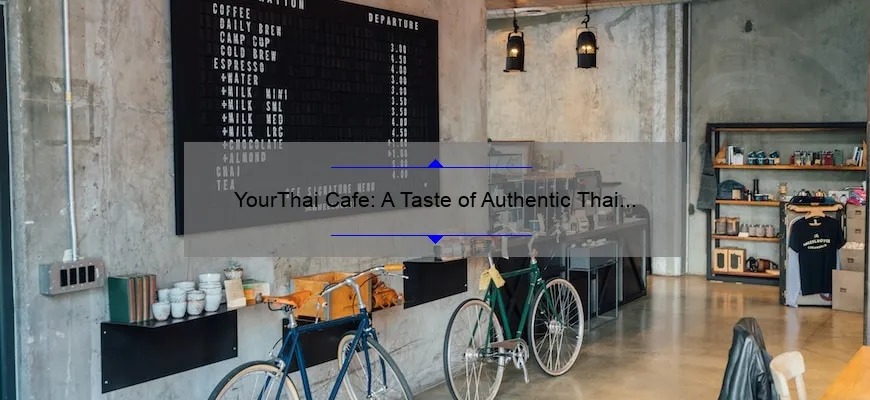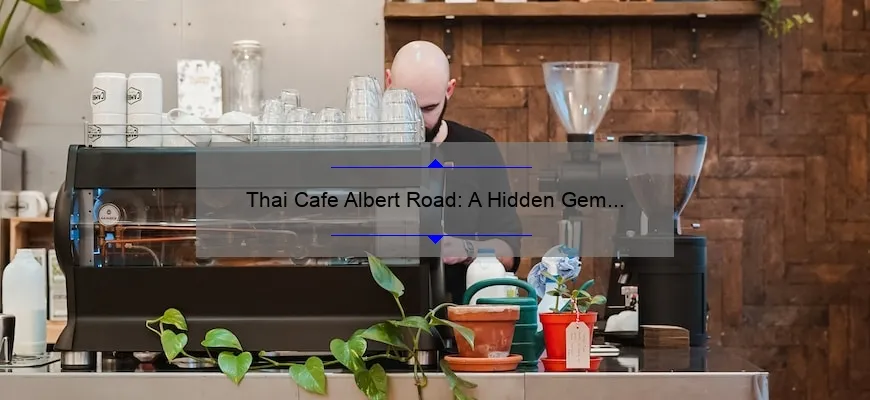**Short answer cafe latte:** A café latte, also known as a “latte”, is an espresso-based coffee drink that consists of steamed milk and a shot or two of espresso. It originated in Italy in the 20th century but became popular worldwide in the following decades. The name “café latte” means “coffee with milk” in Italian.
Your Cafe Latte FAQs Answered: Everything You Need to Know About This Popular Beverage
Cafe Latte is one of the most popular coffee-based beverages out there. It’s a delicious mix of steamed milk and espresso, with just the right balance to leave your taste buds craving for more.
If you’re new to Cafe Lattes or simply want to know more about this creamy concoction, look no further! Here are some frequent questions that people have about Cafe Lattes, answered in great detail.
1) What is a Cafe Latte?
A Cafe Latte (or Caffe Latte if you prefer Italian spelling) is an espresso-based drink made with steamed milk. The term “latte” comes from the Italian word “caffellatte,” which means “coffee and milk.”
In its original form, it was a small shot of espresso blended with equal amounts of warm dairy milk and topped off with a thin layer of foam. However, over time different variations emerged – adding flavor syrups such as vanilla, caramel or hazelnut into the mix. Nowadays cafe lattes come in varying sizes but usually consist of three basic ingredients: Espresso shots added with frothed steamed milk tempered by latte art on top.
2) How many shots are typically in a cafe latte?
The standard number of espresso shots used in modern-day cafe lattes varies based on size ranging from 1-4 grams per serving. Traditionally though it’s one ristretto Espresso shot taken short using seven-gram dose in 60 ml cup size downed first before filling up the rest with micro-foam heated to around 150 degrees Fahrenheit over low steam pressure — often marked by beautiful swirly designs crafted atop called latte art.
3) Where did Cafe Lattes originate?
Lattele originated during World War II when American soldiers stationed overseas started asking their baristas for large cups filled mostly with white milk—since they couldn’t tolerate strong, bold espresso shots like the locals.
It was when Starbucks debuted in America that this cappuccino-like beverage resurfaced and turned into a huge global trend of its own.
4) What’s the difference between Cafe Latte and Cappuccino?
Cafe Lattes differ from Cappuccinos due to differences in milk richness and density ratios used but can be made equally good at home or your nearby café shop! While both drinks contain espresso topped with velvety foamed milk—cappucinos have an equal balance of steamed/frothed milk as well as thick foam on top while letting just enough coffee shine through. In contrast, lattes prioritize smoothness using more whole dairy (rather than skimmed) heated gently to create only a thin layer of froth atop visualized directly in front with latte art by skilled baristas.
5) Can you make Cafe Latte without an Espresso Machine?
Sure, it’s possible – all you really need is ground coffee beans, some hot water, piping-hot milk tempered correctly for
From Bean to Cup: Understanding the Science Behind a Delicious Cafe Latte
Coffee is more than just a beverage; it is an experience that awakens the senses and revitalizes us for another day. The aroma, flavor, and texture all contribute to making our favorite coffee beverages such as cafe latte so special. But have you ever wondered what makes your latte taste so amazing with its creamy milkiness? Understanding the science behind this brewed delicacy can help you appreciate it even more!
Let’s start from the very beginning: coffee beans. There are two common species of coffee plants – Arabica and Robusta. The former produces higher quality beans that make up most of specialty coffees including lattes while the latter has higher caffeine percentages but lower quality flavor profile.
The journey from bean to cup begins when producers pick ripe cherries from a plant in regions around Central America, Asia, Africa or South-east Europe where climate fertilization requirements met roast types desired by consumers later on. Coffee farmers take extra care when picking their fruits since they want only those at peak ripeness levels for consistency and superior taste.
After harvesting, beans undergo thorough processing steps like washing/drying/milling which determine final characteristics before being shipped out worldwide buyers who then roast them into different colorations ranging light brown medium dark ready caffè latte drink lovers enjoy daily basis.
One critical aspect about roasting we should keep in mind is temperature control during coffee bean heating process -maintaining specific degrees according to batch size preserve crucial compounds responsible for desirable flavors & aromas unique each type/origin commercialized globally .
Once roasted well-aerated areas cool down does major factor influence extraction brewing methods baristas use create perfect gastonomical detail individual needs/wishes/thoughts customers request drinks- hence why cafes spend time training staff various factors influencing optimal results espresso-based drinks (milk temperatures foam microbubble structure etc) cater experimentation diverse preferences clientele request sample something new changing options weekly-monthly basis due growing customer demand healthy delicious caffeinated beverages.
Now let’s focus on the milk aspect: its texture affects latte experience. Milk is mostly made of water but has proteins and fats to give it richness, sweetness, and velvety froth when steamed or frothed correctly. The type of milk used (whole, skimmed, almond, oat) also influences a cafe latte’s overall mouthfeel & taste balance while portraying distinct visual characteristics visible to end consumer.
In conclusion understanding scientific factors impact coffee-making process from seed selection through roasting extraction brewing methods/barista skills/machines maintenance/storage conditions…will ultimately enhance your enjoyment craft beverage merely quenching thirst!
Cafe Latte Around the World: Discovering Unique Flavors and Variations of this Beloved Drink
The café latte is one of the most beloved coffee drinks of all time. Its creamy texture and luxurious foam make it a delightful treat that we can never seem to get enough of.
But did you know that the cafe latte has various unique flavors and variations around the world? That’s right – from North America, Europe, Asia, and beyond, this humble beverage has taken on many different forms over the years.
So let’s explore some of these exciting variations of café latte from around the globe:
1. Vienna Melange
This classic Austrian coffee consists of espresso shot topped with equal parts steamed milk and foam. It is served in a special glass mug known as ‘kleiner Brauner’ (little brown) which allows for admiring distinct layers formed by mixing bold espresso with frothy cream-colored milk.
2. Flat White
Hailing from Australia or New Zealand depending on who you ask – flat white contains two shots oozing dark crema extracted into microfoam purring whisper softly while enjoying smooth malty goodness tinged by tasting notes coffees are famed for having such as honey nut almond cocoa flavor profile making it a popular choice among discerning palates worldwide seeking robust joe without overpowering milky sweetness found in lattes usually made without significant artistry behind them despite offering similar ingredients.
3. Egg Coffee
A traditional Vietnamese way of brewing coffee includes beating egg yolks until they become light yellow before whisking them with sugar before raking sludge muck brewed in pot below up top layer forming velvety mixture; sopped cautiously avoiding breaking perfect balance achieved between bitter tannins caffeine versus saccharine pleasure at bottom adding warmth energy like none other when started each morning leaves tongues experiencing unforgettable moment spent together resulting upon finishing first cup smile spread across faces unwinding completely after sensual symphony ingested peacefully with nothing but serene surroundings accompanied silent chirping birds singing out sweet nothingness.
4. Caffè con Panna
In Italy, the cafe latte is not always served in its traditional form. Caffe con panna, a popular variation of this beverage, includes bright espresso poured over potent whipped cream until smooth consistency achieved making it easier to drink despite being more decadent than regular lattes sporting fatty richness—ideal for those craving indulgent fix that satisfies without leaving fraught with guilt afterwards pulsating sugar cane tingling sensitive tooth enamel too much dairy sweets often lead towards causing negative after effects such as bloated stomachs or heartburn.
5. Matcha Latte
The perfect fusion between Japanese match green tea and velvetness of milk makes Matcha Latte truly unique; while powdered tea leaves are singled-out till all impurities extracted resulting high-concentrate emerald flecked with gingerbread undertones joined together harmoniously by heated whole-milk giving sense invigoration from within unlike any other caffeine-based beverages out there which leave overly stimulated or jittery ruining good mood rest night ahead.
6. Mocha
M
